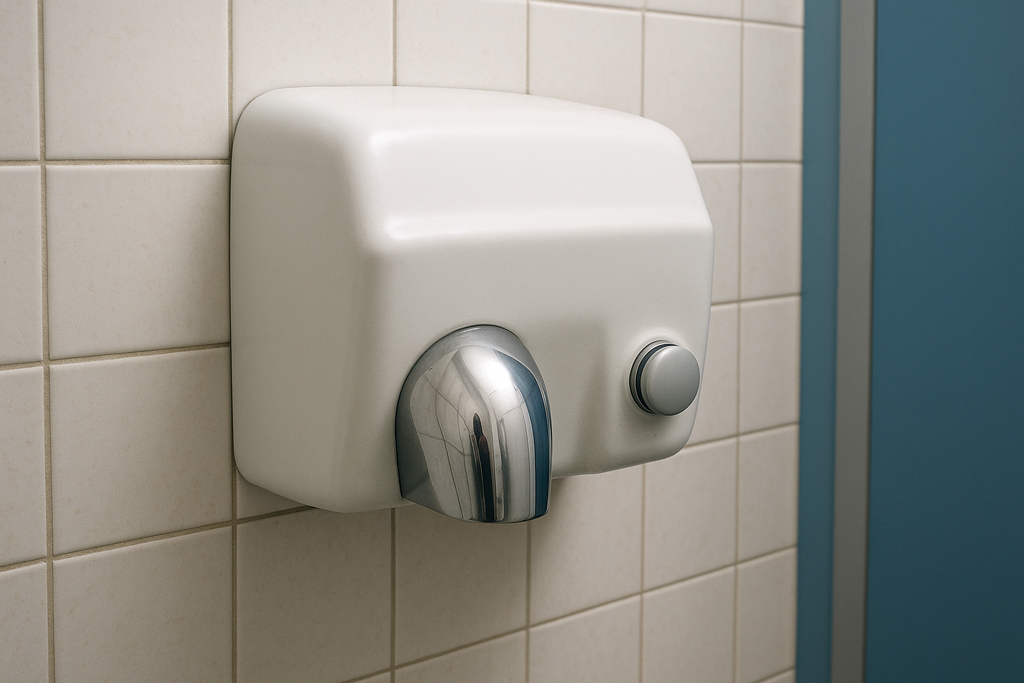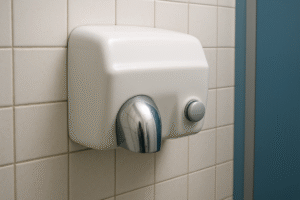School budgets are under unprecedented pressure. With funding constraints tightening year after year, educational institutions must scrutinise every expenditure—even seemingly minor ones like washroom supplies. Yet these “small” costs can accumulate into substantial annual drains on already stretched resources. Hand Dryers for Schools represent a significant capital investment, but do the numbers actually stack up? This financial analysis examines whether switching from paper towels delivers genuine cost savings or merely shifts expenses from one budget line to another.
For finance officers and school business managers seeking to optimise operational spending, understanding the true financial implications of this decision is essential.
Initial Capital Investment: Understanding the Upfront Costs
The first hurdle schools face when considering hand dryers is the initial capital outlay. Quality commercial units suitable for educational environments typically cost between £200 and £1,000 per installation, depending on specifications.
A typical primary school with six washroom facilities might require 12-18 hand dryer units, representing an initial investment of £2,400 to £18,000. For secondary schools with larger estates, costs escalate proportionally. Installation expenses add another £50-£150 per unit if electrical work is required.
Financing Options and Budget Allocation
Schools can spread these costs through various financing mechanisms. Some choose to phase installations across multiple budget years, prioritising high-traffic areas first. Others leverage capital grants or PFI arrangements to fund washroom refurbishments comprehensively.
Leasing arrangements offer an alternative for institutions with limited capital budgets, though these typically increase the total cost over the equipment lifespan.
Ongoing Operational Costs: The Real Financial Picture
Initial investment represents only one component of the financial equation. The critical question for budget holders concerns long-term operational expenditure.
Paper Towel Expenses: The Hidden Budget Drain
Paper towels create substantial recurring costs that many schools underestimate. Industry data suggests the average primary school spends £2,000-£5,000 annually on paper towels alone. Secondary schools typically spend £5,000-£12,000 depending on pupil numbers and usage patterns.
These figures encompass only the product cost. Additional expenses include:
- Labour costs for daily restocking and monitoring—estimated at 2-3 hours weekly for an average primary school (approximately £1,500-£2,000 annually at typical support staff rates)
- Waste disposal fees averaging £500-£1,500 annually
- Storage space requirements that could otherwise generate income or serve educational purposes
- Emergency top-ups purchased at premium prices when supplies run low
Hand Dryer Running Costs: Calculating Energy Consumption
Modern energy-efficient hand dryers consume approximately 1,000-1,800 watts. Based on average usage patterns (30 seconds per dry cycle, 50 uses daily per unit), annual electricity costs typically range from £20-£60 per dryer.
For a primary school with 15 units, total annual energy costs approximate £300-£900—a fraction of paper towel expenditure. Even accounting for rising energy prices, electric dryers remain significantly cheaper to operate.
Maintenance costs average £50-£100 annually per unit for servicing and occasional repairs, though quality commercial models often include warranties covering the first 3-5 years.
Return on Investment Analysis
The financial benefits of hand dryers become clear when calculating payback periods. Consider a typical scenario:
Primary School Example (500 pupils):
- Initial investment: £6,000 (15 units at £400 each)
- Annual paper towel costs eliminated: £3,500
- Annual hand dryer running costs: £600 (energy + maintenance)
- Net annual saving: £2,900
- Payback period: 2.1 years
After the initial payback period, schools realise genuine year-on-year savings that can be redirected toward educational resources. Over a 10-year equipment lifespan, cumulative savings typically exceed £25,000 for an average primary school.
Risk Factors and Financial Considerations
Prudent financial planning requires acknowledging potential risks. Energy price volatility could increase running costs, though savings remain substantial even with 50% energy price increases. Equipment failures outside warranty periods create unbudgeted repair expenses, though these rarely exceed a few hundred pounds annually.
Vandalism represents a more significant financial risk in some educational settings. Schools with persistent vandalism issues may find replacement costs erode projected savings.
Budget Impact Beyond Direct Costs
The financial benefits extend beyond simple cost comparisons. Hand dryers eliminate several indirect budget pressures:
Reduced plumbing callouts: Paper towels frequently block toilets and drains, creating emergency repairs averaging £150-£300 per incident. Schools report 60-80% reductions in towel-related blockages after installing dryers.
Lower cleaning costs: Eliminating wet paper from floors reduces cleaning time and chemical usage, potentially saving 1-2 hours weekly in labour costs.
Improved budget predictability: Fixed assets with known running costs simplify budget forecasting compared to volatile consumable spending.
Financial Sustainability and Environmental Accounting
Educational institutions increasingly face pressure to demonstrate environmental responsibility—a factor with financial implications. Carbon reduction targets may become mandatory, potentially carrying financial penalties for non-compliance.
Hand dryers significantly reduce schools’ environmental footprint, supporting sustainability reporting requirements without additional expenditure. For schools pursuing environmental certifications or eco-school status, this investment serves dual financial and reputational purposes.
Financial Recommendation
From a purely financial perspective, hand dryers deliver compelling returns for most educational institutions. The investment typically pays for itself within 2-3 years, with substantial ongoing savings thereafter.
Finance officers should conduct site-specific cost analyses accounting for pupil numbers, current paper towel expenditure, and energy rates. However, for the majority of schools, the financial case for hand dryers is robust and defensible to governors, trustees, and auditors.
Schools operating under severe immediate budget constraints might phase installations strategically, targeting highest-usage areas first to accelerate payback periods and generate savings that fund subsequent installations.
Featured image: AI generated.




